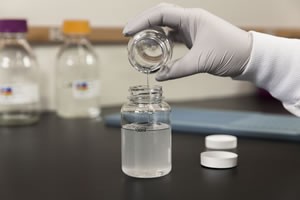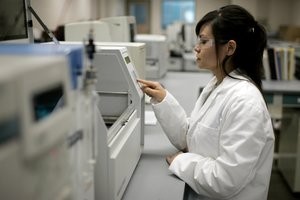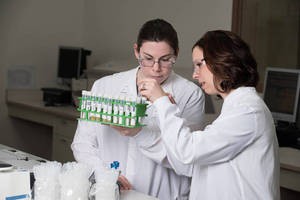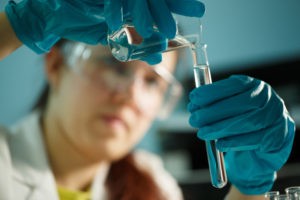The steps of detecting total copper content in sewage by atomic absorption spectrometry
Most of the detection of heavy metal content in water adopts spectrophotometry, which is mainly easy to operate. Today we will talk about the steps to detect the total copper content in sewage by atomic absorption spectrometry. The detection range of tot
The steps of detecting total nickel in water by atomic absorption spectrometry
The direct method of flame atomic absorption spectrometry is used to determine the total nickel in municipal sewage. Its measurement range is related to the characteristics of the instrument. When the wavelength is 2320nm, the measurement range is 0.1mg/L
The steps of detecting total selenium in water by atomic fluorescence spectrometry
There are many methods for the detection of total selenium content in sewage, and atomic fluorescence spectrometry is generally used, and its range is 0.0005mg/L-0.1mg/L. It uses potassium borohydride as a reducing agent in a hydrochloric acid medium to g
Detailed steps for the detection of iodide in water by ion chromatography
The principle of ion chromatography to detect iodide in water is that the collected water sample enters the anion separation column along with the eluent, and the separated iodide ions are detected by a conductivity detector, qualitatively determined acco
The method of collecting water pollution emergency samples
Water pollution incidents are mainly divided into long-term illegal discharge and accidental leakage. Among them, sudden water pollution incidents cause the greatest damage to the water ecological environment, especially the leakage of some toxic and harm
Determination of Fluoride Content in Water by Ion Selective Electrode
Determination of fluoride in water by ion selective electrode method, the lowest detection limit is 0.05mg/L (in F), the principle is that the lanthanum fluoride electrode is used as the indicator electrode, and the saturated calomel electrode (or silver
The steps of detecting total mercury content in water by cold atomic absorption spectrometry
The total mercury content in urban sewage can be detected by cold atomic absorption spectrometry, and its measurement range is 0.0001mg/L-0.010mg/L. This method is mainly to digest the sample with nitric acid, sulfuric acid and excess potassium permangana
Steps of detecting total phosphorus content in water by stannous chloride reduction method
The principle of using stannous chloride to detect total phosphorus in water is actually very similar to the determination of some substances such as cocoa. All of them use the substances detected in water to react with ammonium molybdate or other reagent
Determination of Manganese Content in Water by Formaldehyde Oxime Spectrophotometry
Formaldehyde oxime is a compound formed by the action of carbonyl-containing aldehydes, ketones and hydroxylamine. This compound can form a brown-red compound with manganese in an alkaline solution. The absorbance of this brown-red compound can be measure
Determination of Aluminium Ion in Water by Chromazurine S Spectrophotometry
In addition to the detection of aluminum in drinking and source water using the methods we introduced earlier, it can also be determined by chrome azurine S spectrophotometry. The minimum detection limit of this method is 0.20ug. If the water sample is 25













